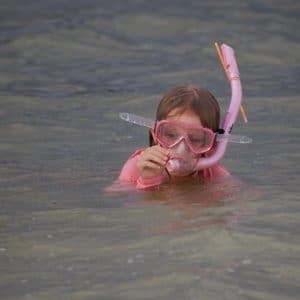It’s Summer, which means rainy season here in Southwest Florida. And every rainy season we run into the same “Hot Topic” of Lake Okeechobee water releases and their impact on water quality here in Southwest Florida.
Did you know this has been going on since 1938?!? The past few years the media has grabbed a hold of this topic as if it was a new issue. This coverage has caused a few tourists to get alarmed, but the media attention has raised awareness with both local and federal politicians about the long-standing water management issues here in Southwest Florida.
On a personal aside, our family has been swimming in the Gulf this week and enjoying relatively clear water finding many sand dollars and Olive snails. Three of our kids attended the Sanibel Sea School and were out in the Gulf every day, snorkeling, paddle boarding, and paddle-racing surf boards.



Read more about the history of Lake O releases and the basics of how it has affected our area by clicking on the article we published two years ago now – Our Thoughts on SWFL Water Conditions.
We first wrote about the topic when we received numerous questions from mis-informed visitors. An update to that article as it pertains to our current situation, is that this year, we do in fact have blue-green algae blooms that have made their way from Lake Okeechobee down the Caloosahatchee River.
Witnessing this growth for himself is what prompted Florida Governor Rick Scott to declare a State of Emergency for affected counties. This put an immediate halt on the lake releases. The purponse of this ‘State of Emergency’ is to cut red tape on getting needed resources such as more water quality testing locations, better public communication and posted warnings, and a strong push for expedited repairs on the Herbert Hoover Dike surrounding Lake O.
Project Update: Repair Herbert Hoover Dike
A statement from Congressman Francis Rooney was released on Monday, July 9, providing a status update on the two projects that can aid in the ongoing water management issue. He wrote that the Army Corps of Engineers has announced an expedited timeline for repair of the dike to be completed by 2022, with funds from hurricane disaster relief going towards the project. Repairing the dike will allow Lake O’ to hold more water, thus, fewer water releases needed.
Project Update: Comprehensive Everglades Restoration Plan (CERP)
The plan outlines a safe means of transporting water from the lake, south into the Everglades, restoring a more natural water flow to the state. Rooney reported a record $115 million set aside for CERP in the FY2019 budget. With this, construction will begin on the EAA Reservoir to store water south of the lake and move it into treatment basins before flowing into Florida Bay.
While this is not an immediate solution to our current water situation, it is a significant step towards better water quality in the years ahead. Like I said, it’s something that has been going on for years, and it takes major public uproar, funding and resources in order to resolve the issues with Florida water management.
Want to learn more?
Here are a few resources to check out.
SCFF produces weekly reports on the water condition, and also holds records from years past. Click here to visit the SCCF Caloosahatchee Conditions Reports.
The Florida Department of Health has information on blue-green algae and how to report cases. Click here to visit the Florida Health website.
The Captains for Clean Waters project sends locals to Washington D.C. to lobby on behalf of the EAA Reservoir Project. Click here to read more about the lobbying efforts and mission of the organization.
The City of Sanibel offers water quality updates and beach alerts Click here to visit the City’s website, and view alerts at the top of the page.
